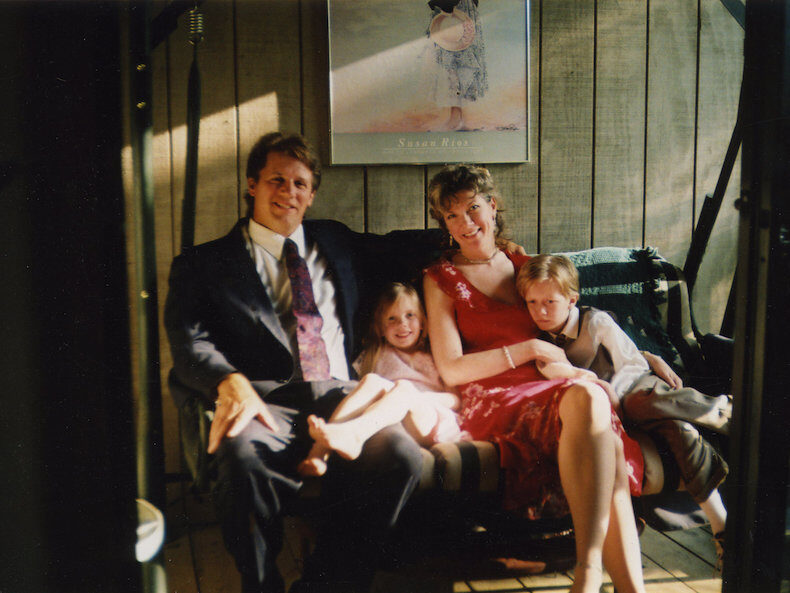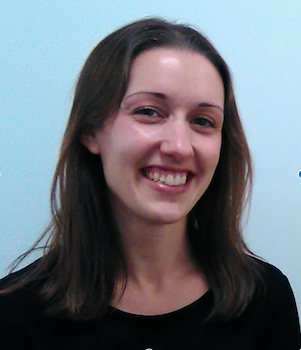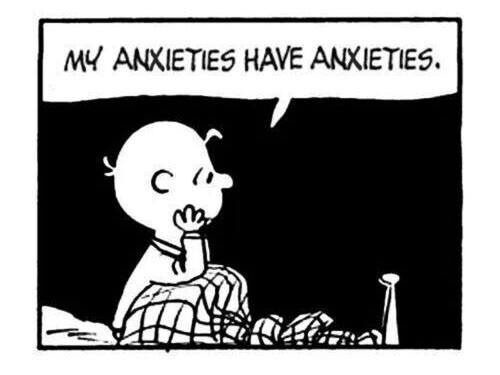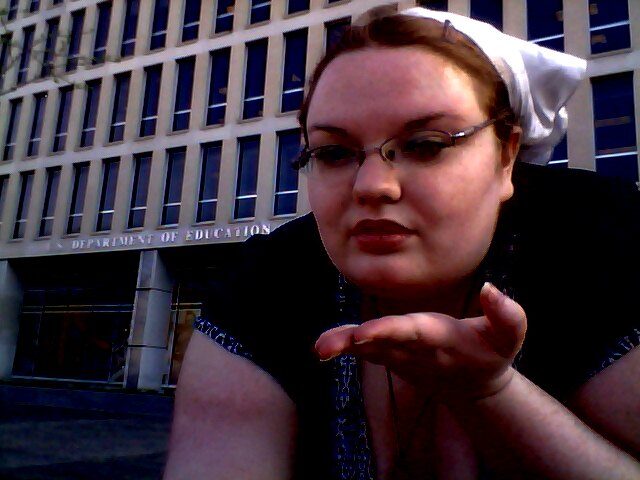Lily Levy at INSAR 2018 [image: Lily Levy, a white British woman, presenting a poster at an autism conference.] INSAR 2019, the International Meeting For Autism Research, starts in three days. Before we begin our coverage, we’d like to emphasize research and themes from last year’s conference INSAR 2018, in Rotterdam—so we can proceed with a grounded sense of how the two conference’s priorities compare and contrast, especially in terms of research that affects autistic people’s quality of life (QoL). A consistent QoL theme of INSAR 2018 was autistic camouflaging, also known as “masking” or “passing.” We spoke with Lily Levy, who led the INSAR 2018 presentation For Better or for Worse? Social Camouflaging, Mental Health and Wellbeing in Autistic Adults. Content note: Discussion of suidicality, bullying, and trauma. Shannon Rosa of TPGA: I’m at INSAR 2018 with Lily Levy, whose group presented the poster on Social Camouflaging, Mental Health and Wellbeing…
Tag: mental health
One of the families featured in A Dangerous Son (Source: HBO) [image: A white family of four, with two young kids, on a couch together.] Kit Mead kpagination.wordpress.com Content note: Discusses violence and abuse regarding children with mental illness and disability, and the Newtown shootings. I’m not going to watch “A Dangerous Son,” the HBO documentary that tells “a story about families with children who have psychiatric disorders that lead to violent behavior.” I’m going to avoid it mostly because I have already read all of those stories. Again. And again. And again. And I have found them incredibly disturbing each time—on behalf of the children who are being written off and exploited. Especially because, as Mel Baggs points out: Across violent and abusive sets of environments, we—the kids—are the only ones seen as having a violence problem. And those environments are so very often the context for “violent outbursts.” Like…
Kerima Çevik theautismwars.blogspot.com The author’s idea of what displaying autism positivity looks like [Image: a Black woman over 50 with braided gray hair wearing Neurodiversity 3.0 by ThinkGeek, a black T-shirt with a world globe design on the upper chest area in the shape of a human brain, colored in physical map fashion i.e., water is colored light blue and land masses green, clouds white, looking to her left over bent wire-rimmed glasses in that way that mothers look at their children when an outrageous behavior has just ensued.] There is an article in a paper called The Daily Net, about singer Toni Braxton’s 16-year-old son Diezel working as a professional model for the past two years. The article refers to him as “formerly autistic.” It goes on to say he has, “fortunately, moved past” autism and is now a celebrity himself. Apparently, when her son was thirteen, Ms. Braxton…
Photo © Ivo Dimitrov | Flickr / Creative Commons [image: Illustration of a human brain, in profile, made of colorful cogs in various sizes and shapes.] Maxfield Sparrow unstrangemind.com [Content note: This post discusses suicidality, mental health, and death.] In the early 1990s, I was engaged to a man with epilepsy. He had tonic-clonic seizures and he was a big guy, so I was always alert to the possibility of an episode. I knew there were stores we couldn’t shop in, and roads I couldn’t drive down. I caught his body and lowered him safely to the ground more times than I can remember. I guarded him from the pressing crowd of curious onlookers when he came around after a public seizure. And I worried, feeling helpless, when his medication levels were off, and he had seizure after seizure. I can’t know what it is like to have epilepsy or…
Shannon Rosa from Thinking Person’s Guide to Autism and Corina Becker from Autism Women’s Network interviewed Laura Crane from CRAE, the UK-based Centre for Research in Autism and Education about her work in supporting best practices in health care and education for autistic people, and also demonstrating that Autistics, children specifically, can be reliable witnesses during criminal investigations. Laura Crane | Photo: CRAE [image: Smiling white woman with long brown hair.] Shannon Rosa: Why don’t you start by telling us a little bit about the work that you’re doing for CRAE, because it seems like you’re involved in so many things. Laura Crane: My research focuses on two main areas. The first is looking at how we can support autistic children and adults within the criminal and family justice systems. A lot of that work has come from police officers and barristers and other legal professionals assuming that autistic children and…
Photo © Mariana Zanatta | Flickr/Creative Commons [image: Hand-drawn black-and-white outlined block letters spelling “anxiety” on a background of “anxiety” written repeatedly in black & filling all space.] Christine Motokane www.workingthedoubleshift.com It is well known that individuals on the autism spectrum are likely to have co-occurring mental health issues such as depression and anxiety. However, mental health is a less-discussed topic surrounding autism, compared to behavior and social challenges, etc. As an autistic young adult with anxiety, I can give personal insight on this high prevalence. A big part of our susceptibility to issues like anxiety has to do with how we were slowly socialized, either implicitly or explicitly, to believe that an autistic lifestyle is something that is defective and therefore needs fixing. A recent Independent article sums up the strong link between lack of autism acceptance and the development of mental health disorders in autistic people: Research shows that lack…
IMFAR 2017: Mental Health Crises in Youth with Autism Spectrum Disorder Storify by Shannon Rosa Sat, May 13 2017 21:08:54 Edit IMFAR 2017: Mental Health Crises in Youth with Autism Spectrum Disorder Clinical experience suggests such crises occur frequently among individuals with an Autism Spectrum Disorder (ASD). Despite the scope and impact of this issue, there is no systematic research on the measurement or management of mental health crises in individuals with ASD. Content note: Discussion of mental health issues, including suicide and other self-harm. ThinkingAutismGuide@thinkingautism Now: Mental Health Crises in #autistic youth. #IMFAR2017 Sat, May 13 2017 17:31:17 ReplyRetweetFavorite First speaker: Session chair L. Kalb: Psychometric Analysis of the Mental Health Crisis Assessment Scale in Youth with Autism Spectrum Disorder AutismWomen’sNetwork@autism_women Psychometric Analysis of the Mental Health Crisis Assessment in [Autistic] Youth #IMFAR2017 Sat, May 13 2017 17:33:36 ReplyRetweetFavorite ThinkingAutismGuide@thinkingautism What = mental health crisis? Settled on APA def:…
How many anxious people are not getting helped because access to mental health services is blocked by the lack of accommodation for the very issue that brings them seeking services in the first place?
Jennifer Byde Myers jennyalice.com Just after the recent murder of Alex Spourdalakis, yet another parent has attempted to murder her autistic child. Services to help families are not available to the degree they are needed, often leaving parents of children with intense needs feeling abandoned, depressed, suicidal and, in some cases, homicidal. I just sincerely wish these conversations could be separate. They must remain separate. I know how it happens, how the conversations seem like they should go together. As parents of kids with intense needs, medical, mental or physical, we are each slogging through life, with easy days and hard days and harder days, until something really bad happens, then we are triggered to say to the world, “See, look how hard this is. Why doesn’t anyone care?” But the problem is that caregivers say this at the very same same time that someone was trying to kill their…
We’re featuring “Slice of Life” conversations with Autistics of all ages — kids through adults — throughout April’s Autism Acceptance Month Our goal is to help TPGA readers understand that autistic people are people who have interesting, complicated lives and who are as diverse and varied as any other population united by a label. We are the people in each other’s neighborhoods, and the more we know about each other — the more visible autistic people and children are — the more common autism acceptance will be. That is our hope. Today we’re talking with multi-faceted self-advocate Savannah Logsdon-Breakstone, who also recorded a video of her answers for accessibility purposes. What’s Your Name? Hi, My name is Savannah Nicole Logsdon-Breakstone. I’m 24. Do you have a website? I write for a lot of places, but my own website is Cracked Mirror in Shalott. I blog mainly about Disability issues, and…







